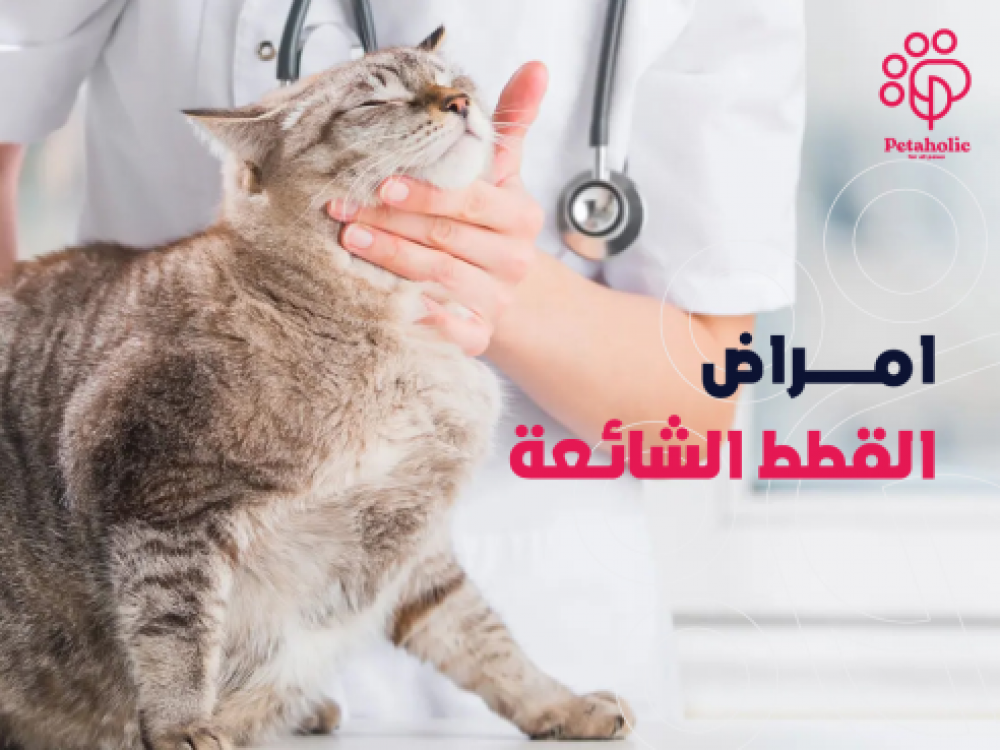
Part of being a responsible cat owner is knowing how to recognize when something is wrong. While the thought of your little buddy becoming infected at all is scary, no cat is immune from the disease. Even if you are an exemplary pet owner and do everything right when caring for your cat, they can suffer from a wide range of health problems. Therefore, in this guide, we help you to know the most common cat diseases, their symptoms, and what you need to know about them. At Petaholic, we also provide you with a range of animal supplies that consider and maintain the health of your cat.
What are common cat diseases and their symptoms?
The most common cat diseases are as follows:
cancer
Cancer in cats comes in many different forms. It causes cells to grow out of control and spread to surrounding tissues, often to other parts of the body. Like humans, cats can suffer from localized cancer confined to one area, or a more generalized cancer affecting multiple parts of the body. There is no single specific cause of feline cancer, but it can cause a wide range of symptoms. Some of the most common symptoms of cancer in cats include:
- Chronic skin infections or sores
- Lumps and tumors
- Bad breath
- lethargy
- Weight loss
- Diarrhea and vomiting
- lack of appetite
- Abnormal discharge from any part of the body
- Difficulty urinating or defecating
- difficulty breathing
Feline leukemia virus
FeLV was discovered in the 1960s and is one of the most common causes of death in cats. This disease does not cause symptoms immediately. It is therefore essential that any new cat that enters your home be tested before introducing it to your other pets. This disease weakens the immune system of cats and makes them more susceptible to kidney disease and anemia. This virus infects kittens less than a year old. Therefore, regularly vaccinating your cat against this disease is the best way to protect her from this potentially fatal disease. Symptoms of feline leukemia virus include:
- Anorexia
- fever
- Upper respiratory infections
- Poor fur condition
- swollen lymph nodes;
- cysts;
- eye problems
Diabetes is one of the most common cat diseases
Diabetes in cats is caused by either a lack of insulin or an inadequate response to it. In healthy cats, insulin carries glucose from digested food into their cells. However, when a cat cannot use or produce insulin normally, glucose causes blood sugar levels to increase. This causes blood sugar to rise, which can have serious consequences.
Like humans, cats can suffer from type 1 or type 2 diabetes. In type 1 diabetes, cats are unable to produce insulin. With type 2 diabetes, cats have poor insulin production, and their body fails to respond to the hormone appropriately. In many cases, cats with type 2 diabetes develop type 1 diabetes as well. Most diabetic cats are not diagnosed until they have type 1 diabetes and need insulin therapy to survive. The exact cause of diabetes is not known, but obesity makes cats more susceptible to the disease. Male cats are more likely to develop diabetes than females. Symptoms of diabetes in cats include:
- Increased or decreased appetite
- Weight loss
- increased thirst
- frequent urination
- Pee outside the litter box
- lethargy
- Sweet breath smell
- Untidy fur
- Urinary tract infections
Feline immunodeficiency virus
Feline immunodeficiency virus (HIV) severely weakens the immune system and makes it more susceptible to secondary infections. Cats infected with the virus often don't show symptoms for several years, or they may develop symptoms gradually over time. Some symptoms of the virus include:
- fever
- Weight loss
- lack of appetite
- swollen lymph nodes;
- diarrhea
- Inflammation of the eyes, mouth, or gums
- Unhealthy fur
- hair loss
- Wounds that do not heal
- Secretions from the eyes or nose
- Frequent urination or straining while urinating
- Behavior change
It should be noted that this disease is usually transmitted from one cat to another through deep bite wounds. Infected mothers can also pass it on to their kittens. Keeping your cat indoors is the best way to protect her from this devastating disease. If your cat has been discharged, we may recommend that she be vaccinated against this disease. We also recommend testing new cats before introducing them to existing pets.
Among the essential products to support your cat's health from Petaholic:
How to protect your cat from disease?
Although it is helpful to know how to care for your cat when she is sick, it is also important to know how to prevent your cat from getting sick in the future. Here are some quick pointers that may help prevent your cat from getting sick and grow them into happy, healthy cats.
- Regular check-ups with your vet early and often. Once you adopt the kitten, she must be seen by the vet. It is also important to stay on track with vaccinations and to bring a stool sample at each checkup.
- Spend time with your cat every day and learn her routine. If you don't really know what's normal for your cat, it can be hard to tell if something is wrong. Watch how much your cat sleeps, the places she likes to spend time, the time of day she eats, and the people she likes to spend time with. If your cat starts acting differently, something may be wrong, and you can get her back on track more quickly if you're a careful observer.
- Be aware of everything in the cat's environment and surroundings. The things in your house are safe for you, but they may not be safe for your little friend, and they cause common cat diseases in a large way. Therefore, before bringing a cat home, research the small areas where it can get stuck. Strings that can get tangled up, like window blinds for example, and especially plants, foods, and chemicals that need to be locked up or put out of reach. As your cat grows, be careful about what other family members or friends bring into your home.
- good nutrition. Many diseases can be prevented if your pet has a strong immune system and gets a steady supply of the right vitamins and minerals. So talk to your vet to determine the best food for your cat. Always follow your vet's recommendations for how much and how often to feed your cat.
Among our essential products for the health and safety of your pampered cat:
After all, when you think your little friend might be sick, every second counts. Diseases tend to develop quickly. Therefore it is always best to seek veterinary care at the first sign of a problem. At Petaholic you will also find a wide variety of cat supplies to take care of them properly.
We also have:

